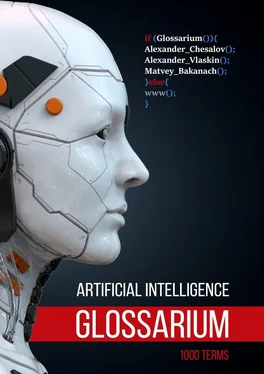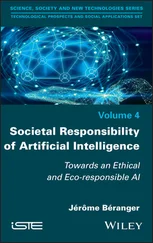Convex set (Выпуклое множество) –A subset of Euclidean space such that a line drawn between any two points in the subset remains completely within the subset. For instance, the following two shapes are convex sets.
Convolution (Свертка) —The process of filtering. A filter (or equivalently: a kernel or a template) is shifted over an input image. The pixels of the output image are the summed product of the values in the filter pixels and the corresponding values in the underlying image [ 125 125 Convolution [Электронный ресурс] // spec-zone.ru/ URL: https://spec-zone.ru/RU/OSX/documentation/Performance/Conceptual/vImage/ConvolutionOperations/ConvolutionOperations.html (дата обращения: 09.02.2022)
]
Convolutional filter (Сверточный фильтр) –One of the two actors in a convolutional operation. (The other actor is a slice of an input matrix.) A convolutional filter is a matrix having the same rank as the input matrix, but a smaller shape.
Convolutional layer (Сверточный слой) – A layer of a deep neural network in which a convolutional filter passes along an input matrix.
Convolutional neural network (CNN) ( Распознавательная нейронная сеть)is a type of neural network that identifies and interprets images
Convolutional neural network (Сверточная нейронная сеть) –In deep learning, a convolutional neural network (CNN, or ConvNet) is a class of deep neural networks, most commonly applied to analyzing visual imagery. CNNs use a variation of multilayer perceptrons designed to require minimal preprocessing. They are also known as shift invariant or space invariant artificial neural networks (SIANN), based on their shared-weights architecture and translation invariance characteristics. Сonvolutional neural network is a class of artificial neural network most commonly used to analyze visual images. They are also known as Invariant or Spatial Invariant Artificial Neural Networks (SIANN) based on an architecture with a common weight of convolution kernels or filters that slide over input features and provide equivalent translation responses known as feature maps.
Convolutional operation (Сверточная операция) –The following two-step mathematical operation: Element-wise multiplication of the convolutional filter and a slice of an input matrix. (The slice of the input matrix has the same rank and size as the convolutional filter.) Summation of all the values in the resulting product matrix.
Corelet programming environment ( Среда программирования Corelet) is a scalable environment that allows programmers to set the functional behavior of a neural network by adjusting its parameters and communication characteristics.
Corpus (Корпус) –A large dataset of written or spoken material that can be used to train a machine to perform linguistic tasks.
Correlation (Корреляция)is a statistical relationship between two or more random variables.
Correlation analysis (Корреляционный анализ)is a statistical data processing method that measures the strength of the relationship between two or more variables. Thus, it determines whether there is a connection between the phenomena and how strong the connection between these phenomena is.
Cost ( Стоимость) – synonym for loss. A measure of how far a model’s predictions are from its label. Or, to put it more pessimistically, a measure of how bad a model is. To determine this value, the model must define a loss function. For example, linear regression models typically use the standard error for the loss function, while logistic regression models use the log loss.
Co-training (Совместное обучение)
Co-training essentially amplifies independent signals into a stronger signal. For instance, consider a classification model that categorizes individual used cars as either Good or Bad. One set of predictive features might focus on aggregate characteristics such as the year, make, and model of the car; another set of predictive features might focus on the previous owner’s driving record and the car’s maintenance history. The seminal paper on co-training is Combining Labeled and Unlabeled Data with Co-Training by Blum and Mitchell [ 126 126 Co-training [Электронный ресурс] www.v7labs.com URL: https://www.v7labs.com/blog/semi-supervised-learning-guide (дата обращения 06.03.2022)
].
Counterfactual fairness (Контрфактическая справедливость) –A fairness metric that checks whether a classifier produces the same result for one individual as it does for another individual who is identical to the first, except with respect to one or more sensitive attributes. Evaluating a classifier for counterfactual fairness is one method for surfacing potential sources of bias in a model. See “When Worlds Collide: Integrating Different Counterfactual Assumptions in Fairness” for a more detailed discussion of counterfactual fairness.
Coverage bias ( Систематическая предвзятость охвата) this bias means that the study sample is not representative and that the data set in the array has zero chance of being included in the sample.
Crash blossom ( Двусмыссленная фраза) – A sentence or phrase with an ambiguous meaning. Crash blossoms present a significant problem in natural language understanding. For example, the headline Red Tape Holds Up Skyscraper is a crash blossom because an NLU model could interpret the headline literally or figuratively.
Critic (Критик) – Synonym for Deep Q-Network.
Critical information infrastructure (Критическая информационная инфраструктура) – objects of critical information infrastructure, as well as telecommunication networks used to organize the interaction of such objects.
Critical information infrastructure of the Russian Federation (Критическая информационная инфраструктура Российской Федерации) – a set of critical information infrastructure objects, as well as telecommunication networks used to organize the interaction of critical information infrastructure objects with each other.
Cross-entropy (Кросс-энтропия) –A generalization of Log Loss to multi-class classification problems. Cross-entropy quantifies the difference between two probability distributions. See also perplexity.
Crossover (Also recombination) (Кроссовер) – In genetic algorithms and evolutionary computation, a genetic operator used to combine the genetic information of two parents to generate new offspring. It is one way to stochastically generate new solutions from an existing population, and analogous to the crossover that happens during sexual reproduction in biological organisms. Solutions can also be generated by cloning an existing solution, which is analogous to asexual reproduction. Newly generated solutions are typically mutated before being added to the population [ 127 127 Crossover [Электронный ресурс] //brainly.in URL: https://brainly.in/question/5802477 (дата обращения 28.02.2022)
].
Cross-Validation (k-fold Cross-Validation, Leave-p-out Cross-Validation) (Перекрёстная проверка) –A collection of processes designed to evaluate how the results of a predictive model will generalize to new data sets. k-fold Cross-Validation; Leave-p-out Cross-Validation.
Читать дальше












